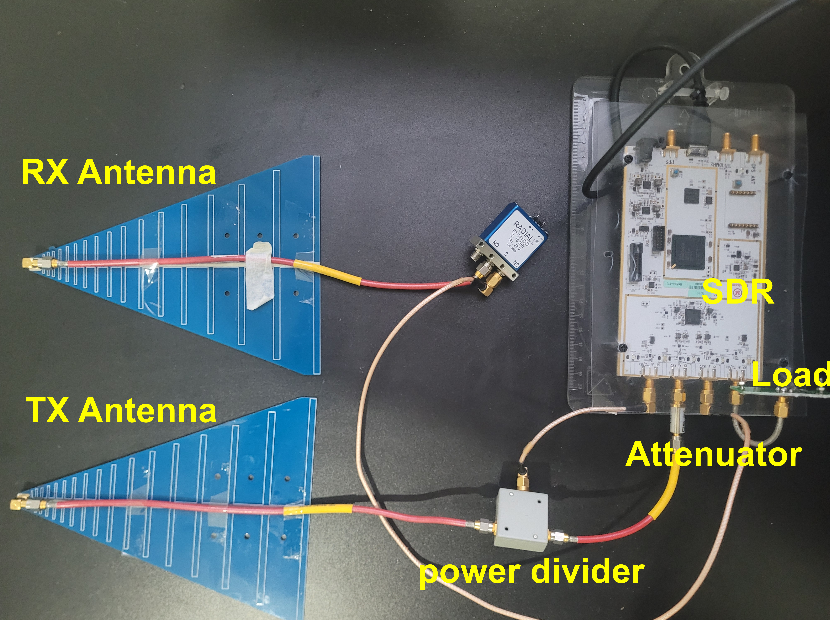Experiments with a holographic radar based on Software Defined Radio
Keywords:
Software-defined radio, radar, through-the-wallAbstract
The development of radar applications usually involves a complex set of different components, which can be costly and sometimes require careful handling. By concentrating most of the radar tasks into a software-defined radio, the hardware burden is alleviated, while the processing can be efficiently developed using open-source software suites. This article describes the development of a prototype radar based on a commercial software-defined radio, using only a few extra components. It operates under the holographic principle, where excitation is performed in single frequency, continuously transmitted. The tests have shown its potential applicability, carried out in an indoor environment, including through-the-wall detection.
Downloads
References
G. Charvat, Small and Short-Range Radar Systems. CRC Press, 2014.
A. Sluyters, S. Lambot, and J. Vanderdonckt, “Hand gesture recognition
for an off-the-shelf radar by electromagnetic modeling and inversion,”
in Proceedings of the 27th International Conference on intelligent user
interfaces (IUI), 2022.
A. Bekar, M. Antoniou, and C. J. Baker, “High-resolution droneborne
sar using off the-shelf high-frequency radars,” in IEEE Radar
Conference (RadarConf21), 2021.
H. Jeong and S. Kim, “Educational low-cost c-band fmcw radar system
comprising commercial off-the-shelf components for indoor throughwall
object detection,” Electronics, vol. 10, pp. 1–11, 2021.
R. May, Y. Steinheim, P. Kvaløy, and F. Hanssen, “Performance test and
verification of an off-the-shelf automated avian radar tracking system,”
Ecology and Evolution, vol. 7, pp. 5930–5938, 2017.
G. Storz and A. Lavrenko, “Compact low-cost fmcw harmonic radar for
short range insect tracking,” in IEEE Radar Conference (RADAR), 2020.
C. Özdemir, Inverse Synthetic Aperture Radar Imaging With MATLAB
Algorithms. Wiley, 2012.
J. M. Christiansen and G. E. Smith, “Development and calibration of a
low-cost radar testbed based on the universal software radio peripheral,”
IEEE Aerospace and Electronic Systems Magazine, vol. 34, no. 12,
pp. 50–60, 2019.
N. I. Avdievich, A. V. Nikulin, L. Ruhm, and A. W. Magill, “A 32-
element loop/dipole hybrid array for human head imaging at 7 T,” Magn.
Reson. Med., pp. 1–15, 2022.
J. Jehanzeb Burki, T. Ali, and S. Arshad, “Vector network analyzer (vna)
based synthetic aperture radar (sar) imaging,” in Proceedings of the 16th
International Multi Topic Conference (INMIC), 2013.
A. A. Pramudita, T. O. Praktika, and S. Jannah, “Radar modeling experiment
using vector network analyzer,” in Proceedings of the International
Symposium on Antennas and Propagation (ISAP), 2020.
J. Yu and M.-H. Ka, “Precision near-field reconstruction in the time
domain via minimum entropy for ultra-high resolution radar imaging,”
Remote Sens., vol. 9, no. 449, pp. 1–19, 2017.
L. Bossi, P. Falorni, and L. Capineri, “Versatile electronics for microwave
holographic radar based on software defined radio technology,”
Electronics, vol. 11, pp. 1–16, 2022.
R. K. Amineh, M. Ravan, R. Sharma, and S. Baua, “Three-dimensional
holographic imaging using single frequency microwave data,” International
Journal of Antennas and Propagation, vol. 2018, no. 6542518,
pp. 1–15, 2018.
K. Iizuka, “Microwave hologram by photoengraving,” IEEE Proceedings,
vol. 57, no. 5, pp. 813–814, 1969.
M. R. P. Cerquera, J. D. C. Montaño, and I. Mondragón, UAV for
Landmine Detection Using SDR-Based GPR Technology. Intech, 2017.
W. Feng, J. M. Friedt, and P. Wan, “Sdr implemented ground-based interferometric
radar for displacement measurement,” IEEE Trans. Instrum.
Meas., vol. 70, pp. 1–18, 2021.
H. L. Hartnagel, R. Quay, U. L. Rohde, and R. M. (editors), Fundamentals
of RF and Microwave Techniques and Technologies. Springer,
M. B. Perotoni, C. J. Bordin Jr., and K. M. G. dos Santos, “Conversion
of scattering parameters to time-domain for imaging applications: Rules
and examples,” Journal of Communication and Information Systems,
vol. 36, no. 1, pp. 1–7, 2021.
H. C. Kumawat and A. B. Raj, “Extraction of doppler signature of
micro-to macro rotations/motions using continuous wave radar-assisted
measurement system,” IET Sci., Meas. Technol., vol. 14, pp. 772–785,
M. G. Amin, Through-the-wall radar imaging. CRC Press, 2011.
S. Singh, Q. Liang, D. Chen, and L. Sheng, “Sense through wall
human detection using uwb radar,” EURASIP Journal on Wireless
Communications and Networking, vol. 20, pp. 1–11, 2011.


